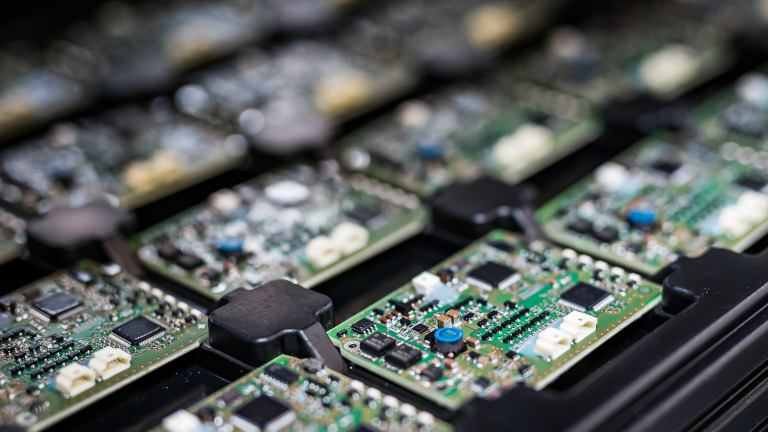How does a battery management system (BMS for short) work, exactly? Check out in our article!
Table of Contents:
Key Takeaways:
- BMS is the Controller: The Battery Management System acts as the central brain, constantly monitoring the state of every individual cell within the battery pack.
- Primary Functions are Safety & Longevity: BMS primary job is to prevent dangerous malfunctions (like overheating, short-circuiting, and overcharging) and to actively prolong the overall health (SOH) and performance efficiency of the battery.
- Software and Hardware Integration: Effective BMS operation relies on a complex mix of hardware components and specialized software algorithms for accurate data collection and immediate protective action.
How does a battery management system (BMS for short) work, exactly? Strictly speaking, their manner of application and use will differ greatly depending on what the battery management system is powering. In general, however, these systems manage and continuously monitor the operation of large numbers of battery cells grouped together to power devices like storage units, electric vehicles, or industrial machinery. To learn all about how battery management systems work, read the rest of this article!
What is a Battery Management System and How do BMS Work?
Battery management systems, or BMS for short, combine software and hardware to create a singular system designed to oversee, monitor, and manage entire clusters of batteries. The actual number of units comprising a system can vary depending on the intended application. The average eBike battery, for example, will normally contain around 20 to 60 battery cells, but an electric vehicle will house upwards of 2,000.
Going back to the battery management systems, they consist of an intricate combination of sensors, controllers, and interfaces, allowing the user to observe how the battery management system works in real-time. Such systems are designed with several checks and security measures in place that allow it to operate self-sufficiently without the need for human intervention.
Why, Where & How do Battery Management Systems work?
A singular lithium-ion battery cell has very limited capacity – its output is enough to power smaller devices, like smartphones. For more advanced devices and machinery, like cars or powerful industrial equipment, a much larger power output is required. However, given the intricate nature of such devices and the innumerable moving parts, introducing more batteries significantly complicates how the electronic components interact.
That’s where battery management systems come in. Their task is to increase the efficiency of the whole battery system and ensure optimal performance. Through the complex integration of a number of components, a BMS monitors the cells, balances charge levels, and much more.
How does a battery management system work in detail? Take a look below:
- Sensors: A BMS constantly monitors the temperature, voltage, SoC (state of charge) levels and current flowing through each component.
- Balancing cells: With use, certain sections of the battery system may fall out of balance, with some drops in performance and faster discharging. Balancing circuit prevents that, redistributing charge where necessary to promote optimal performance and enhance battery longevity.
- Protective measures: Should the voltage or temperature get too high, the system has failsafes, fuses, and circuit breakers in place to guarantee optimal conditions or shut down a malfunctioning cell.
- Communication interfaces: Battery management systems allow users to obtain these readings or influence the system directly via a CAN bus or other interfaces.
On the software side, as we mentioned, such systems are largely automatic due to their inherent complexity. This automation is possible thanks to the integration of complex algorithms. Whenever certain parameters, like voltage or temperature values, exceed pre-programmed norms and thresholds, the system intervenes and controls various processes to ensure optimal operation.
One critical aspect the BMS addresses concerns overcharging and over-discharging. Both powering a battery cell with excessive current and allowing it to drain for too long can damage the battery’s health over time, reducing the effectiveness of the whole system. By properly cycling the power and redirecting it as needed, the risk of degradation goes down.
Future BMS developments
Like everything else in the world of batteries, the constant demand for more intricate technology keeps driving ingenuity. For example, there are plans to implement artificial intelligence with BMS’s. This will aim to predict battery behavior and make pre-emptive adjustments to account for peaks and lows, optimizing performance even further.
BMS: The Brain and Guardian of the Battery
Battery management systems work by constantly monitoring the state of each battery cell within the system. Through a complex combination of hardware and software, they prevent malfunctions due to overheating or short-circuiting and prolong battery health and performance efficiency. With many technological advancements on the horizon, EMBS aims to remain at the forefront of innovation and utilize our years of experience to deliver custom-made battery solutions for each application.
You may also read: How Does a Lithium Ion Battery Work?
What is a Battery Management System (BMS)?
How does a BMS monitor and manage battery cells?
What are the key functions of a BMS?
About the Author
EMBS
Leading manufacturer of advanced battery systems with a market presence of over 25 years. We specialise in rechargeable lithium-ion batteries, producing a wide range of systems with varying power and capacity.
